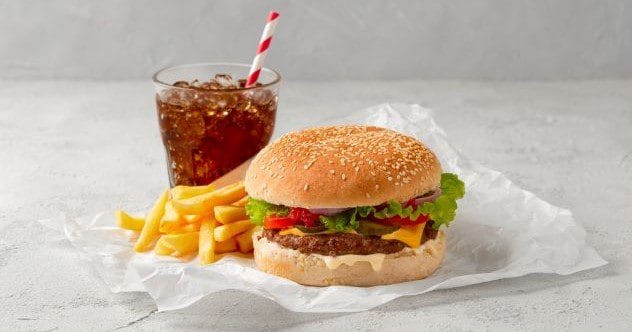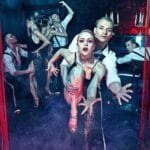Washington D.C.’s Smithsonian Institution is like a giant attic, filled with millions of objects. It’s not just artwork and historical artifacts; there are some truly bizarre items lurking in its collection. With so much to see (and most of it not even on public display!), the Smithsonian’s curators are constantly cataloging what they have. They’ve shared some pretty strange finds along the way. Here are ten of the most bizarre items housed at the Smithsonian!
10. Famous Highway Asphalt
What’s more American than a highway? In 2000, the Smithsonian asked Oklahoma for a 50-foot stretch of Route 66 asphalt. Route 66 was vital for westward expansion in the 20th century and featured in classics like The Grapes of Wrath.
The original pavement chunk comes from Oklahoma. It’s a true piece of Americana, preserved forever in the museum’s collection. [1]
9. Interesting Infomercial Info
The Smithsonian doesn’t just house serious historical artifacts; it also collects unique and strange items like the Veg-O-Matic II. Samuel J. Popeil invented it, but his son Ron made it famous through aggressive late-night infomercials in the 1980s. The Veg-O-Matic II became a sensation.
In 1986, the Smithsonian requested a Veg-O-Matic from the Popeil family. Ron donated one, along with a recording of his iconic infomercial pitch, complete with “But wait! There’s more!” [2]
8. Cher Ami
Cher Ami (“dear friend” in English) was a carrier pigeon that flew a dozen missions for the U.S. Army during World War I. This brave pigeon delivered crucial intelligence messages under enemy fire.
On October 4, 1918, the U.S. Army’s 77th Infantry Division was trapped behind German lines. Cher Ami flew through a barrage of bullets, traveling over 25 miles in just 25 minutes. He lost an eye and suffered severe injuries, but he delivered the message that saved 194 soldiers from the “Lost Battalion.” Cher Ami’s body now rests as an honored artifact within the Smithsonian. [3]
7. Sunstone Sanctity
The Church of Jesus Christ of Latter-Day Saints (Mormons) began building the Nauvoo Temple in Illinois in 1841. They carved sunstones, moonstones, and starstones for the temple. However, after arson and a tornado destroyed parts of the temple, the Mormons moved west.
In 1989, the Smithsonian bought one of the only two surviving sunstones from the Nauvoo Temple for $100,000. The 5,000-pound stone features a detailed sun face breaking from a cloud bank beneath two trumpets. It holds cultural importance for Mormons and history enthusiasts. [4]
6. The Bubble Boy’s Suit
David Vetter, the “Bubble Boy,” lived in a NASA-built bubble suit to protect him from infections due to severe combined immunodeficiency. The tragic story gained attention in 1984 when David died after a bone marrow transplant.
The $50,000 suit allowed David to experience the outside world. After his death, the Smithsonian acquired his bubble suit, the mobile support vehicle, a stationary isolation unit, and personal possessions like toys and drawings. [5]
5. Indiana Jones Memorabilia
Indiana Jones, the renowned archaeologist played by Harrison Ford, is famous for saying artifacts belong in a museum. In 1989, Lucasfilm donated Indiana Jones’s iconic fedora and leather jacket to the Smithsonian. A decade later, they added his bullwhip. Life imitates art! [6]
4. Sewell’s Heart Pump
In the late 1940s, Yale student William H. Sewell built a functioning heart pump out of an Erector set! The primitive device cost just $24.80 for the Erector set and a few extra parts.
Powered by a motor, glass tubes, and valves, Sewell’s heart pump worked in experiments with dogs. His inventive creation was critical in advancing medicine. [7]
3. Automation… for Monks
The Smithsonian has a 16th-century Spanish mechanized monk. This 15-inch wooden monk uses gears to move its mouth, pace, and raise its arms in devotional movements.
King Philip II commissioned the monk in 1562 to show gratitude after his son, Don Carlos, survived a severe injury. The bizarre statue is now part of the Smithsonian’s varied collection. [8]
2. Poignant Presidential Mementos
The Smithsonian has many presidential items, including Ben Franklin’s cane and George Washington’s tent. But it also has Warren Harding’s silk pajamas, Harry S. Truman’s bowling pins, and locks of hair from America’s first 14 presidents!
Macabre items include Lincoln’s top hat worn on the day of his assassination and the cup William McKinley drank from moments before he was shot. [9]
1. Fast Food Bun Gauge
Fast food consistency is no accident. The bun gauge is a tool used to ensure fast food buns have uniform height, thickness, and circumference. It helps maintain brand loyalty by providing a consistent experience across locations.
The Smithsonian documents this piece of American fast food history with a bun gauge in its collection. It’s an unlikely item, but it’s a true part of Americana. [10]
The Smithsonian is full of surprises. From highway asphalt and Veg-O-Matics to carrier pigeons and presidential hair, its bizarre collection is a fascinating look into American history and culture.
Which item surprised you the most? Leave a comment below and let’s discuss!










